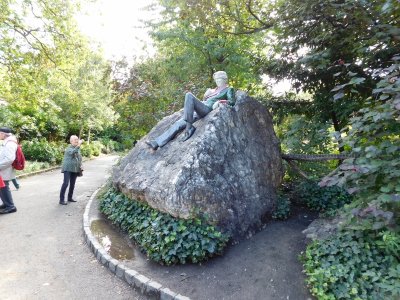
The Oscar Wilde Sculpture- It’s laid back, almost anti-monumental, comes up suddenly is comic and exactly right. |
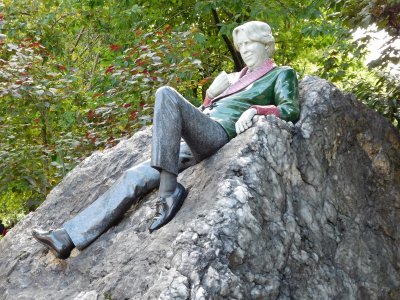
Oscar Wilde ,author, playwright and poet was born in 1854 at no. 1 Merrion Square- just across the road from his sculpture |
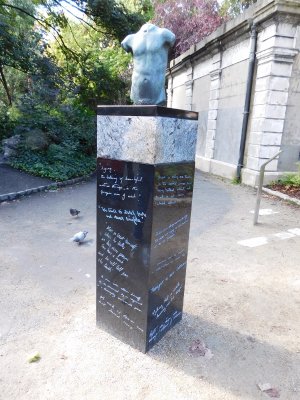
The Oscar Wilde Sculpture- a pillar with a bronze male torso representing Dionysus, the God of wine, youth and theatre |
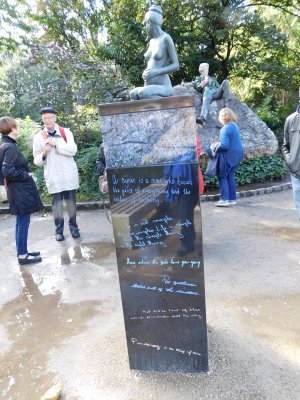
The Oscar Wilde Sculpture- a pillar with a bronze of his pregnant wife, Constance, staring accusingly across the path at him |
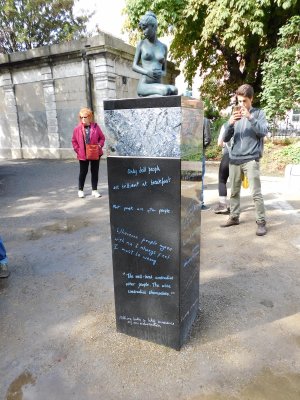
The pillars are covered in quotations from Wilde’s writing, setting out his thoughts, opinions and witticisms on art and life. |
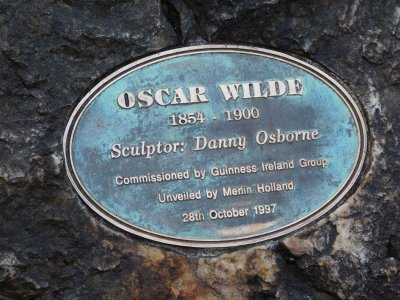
The Oscar Wilde Sculpture |
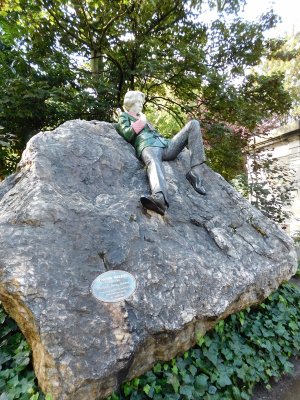
Mounted reclining on a large quartz boulder Wilde was formed from different coloured stones from three continents |
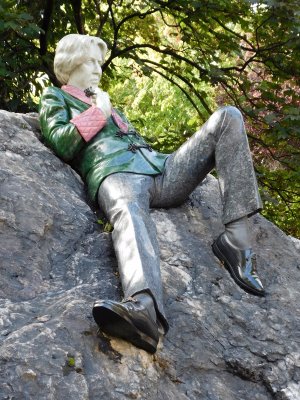
The sculpture captures Oscar Wilde’s flamboyant & colourful personality, depicted at the age of 40-a pivotal time in his life |
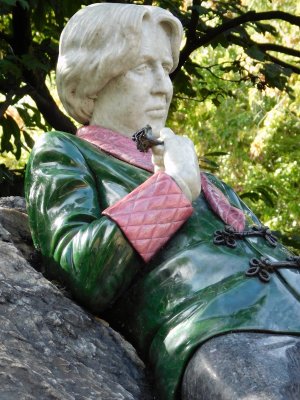
The Oscar Wilde Sculpture |
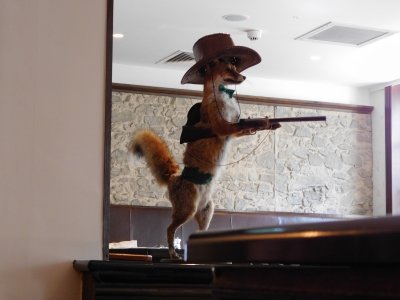
Oscar's Bar and Kitchen whimsical decor |
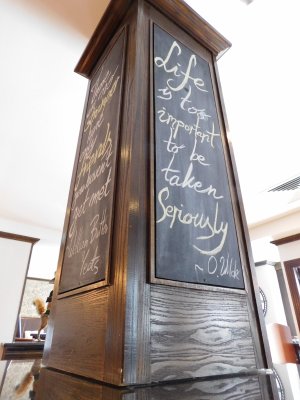
Oscar's Bar and Kitchen with more quotes and musings by Oscar Wilde everywhere |

Oscar's Bar and Kitchen- Super good food but alas it's gone now |
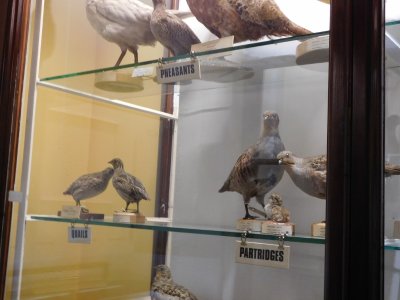
National Museum of Ireland - Natural History Museum also known as The Dead Zoo |
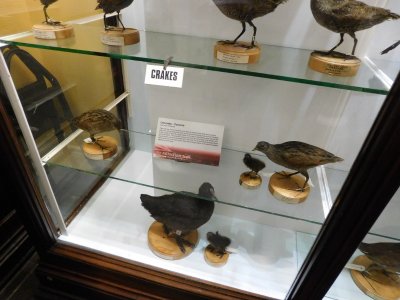
The Dead Zoo is a ‘cabinet-style’ museum designed to showcase a wide-ranging and comprehensive zoological collection |
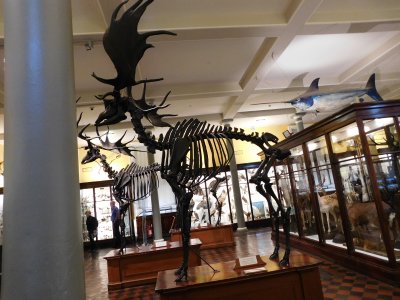
The Irish Room(ground floor) is dedicated to animals native to Ireland, featuring a variety of mammals, birds, fish, & insects |
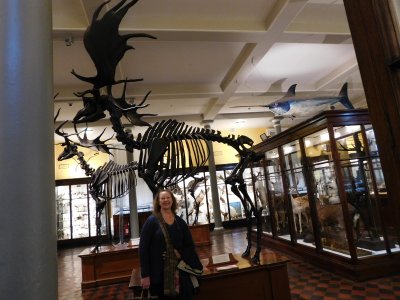
The giant Irish deer skeletons found at the entrance of the Museum are some of the most famous & distinctive animals on display |
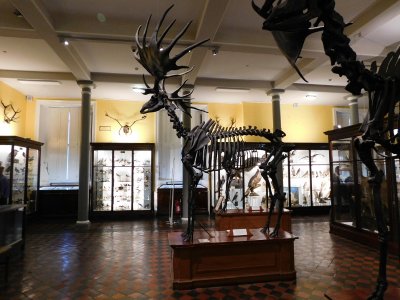
Dead Zoo- One of the skeletons has an antler span of 3.5 metres |
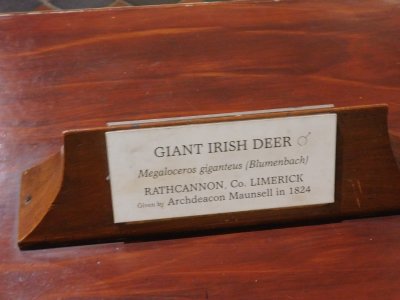
The Dead Zoo |
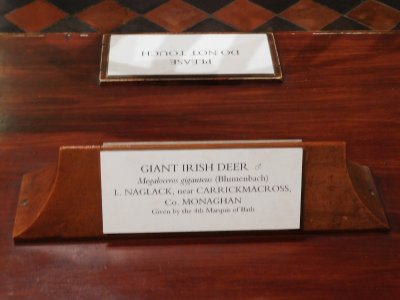
The Dead Zoo |
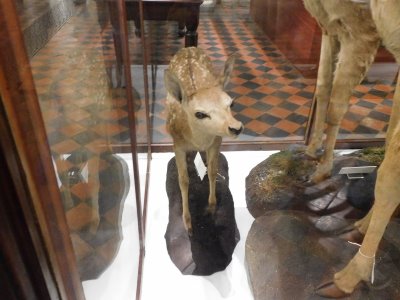
This grouping of Irish fauna in one room dates from 1910, when the collections were arranged by geography rather than taxonomy |

The Dead Zoo |
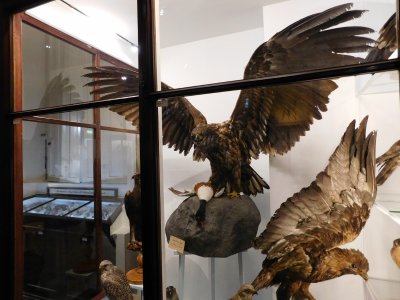
Stuffed & mounted mammals, birds, fish, insects & other animals native to or found in Ireland- comprise the rest of the floor |
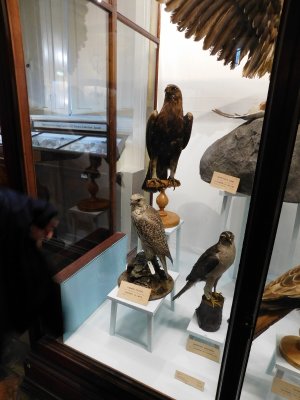
The Dead Zoo |
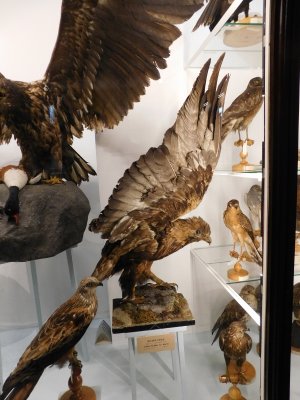
The Dead Zoo |
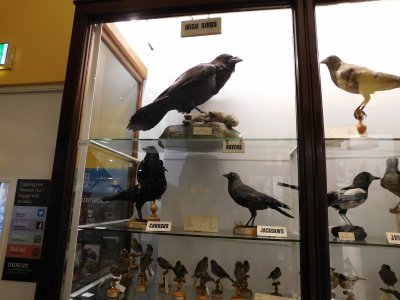
The Museum's collection & building have changed little since Victorian times, & is sometimes described as a museum of a museum |
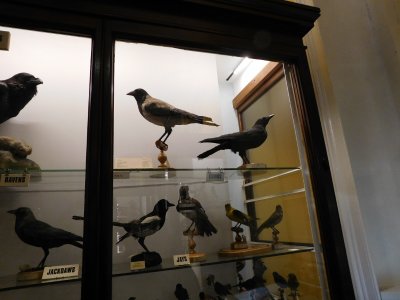
The Dead Zoo |
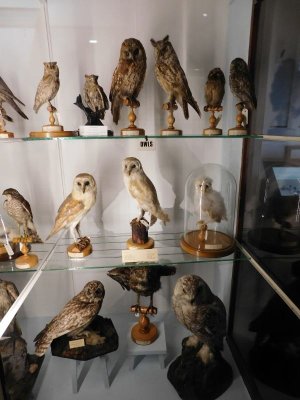
It's 10,000 exhibits provide a glimpse of the natural world that has delighted visitors since the doors opened in 1857 |
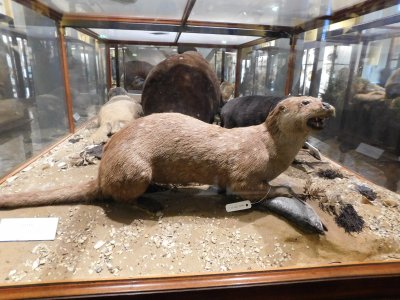
The Dead Zoo |
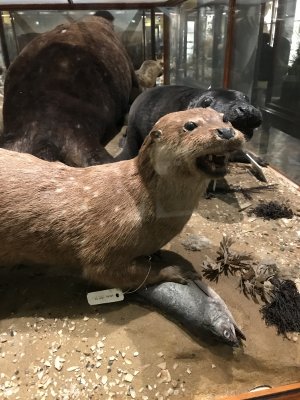
The Dead Zoo |
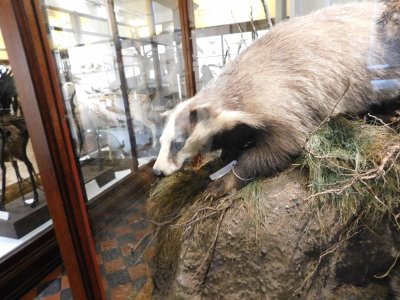
Many of the specimens of currently extant animals, such as badgers, hares, and foxes, are over a century old |
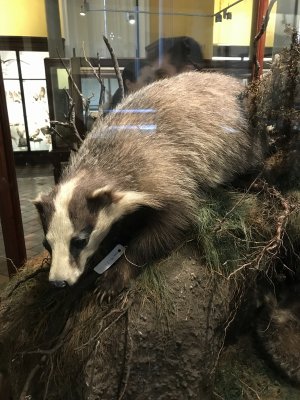
The Dead Zoo |
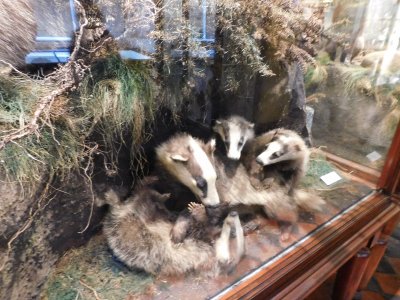
The Dead Zoo- Honey Badger don't care |
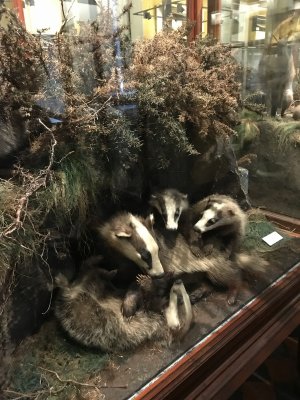
The Dead Zoo |
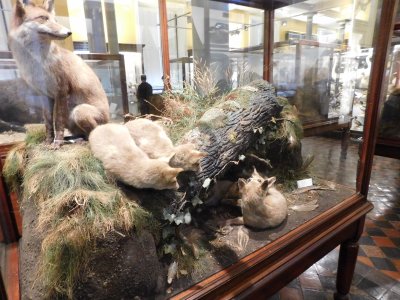
The Dead Zoo |
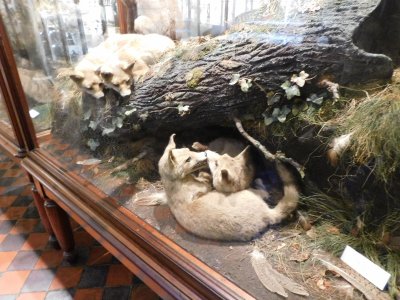
The Dead Zoo |
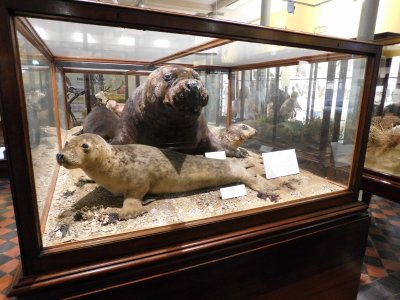
The Dead Zoo |
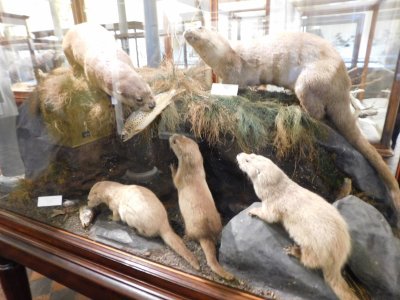
The Dead Zoo |
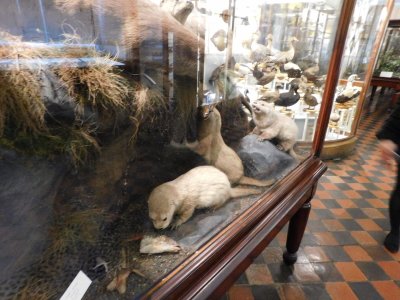
The Dead Zoo |
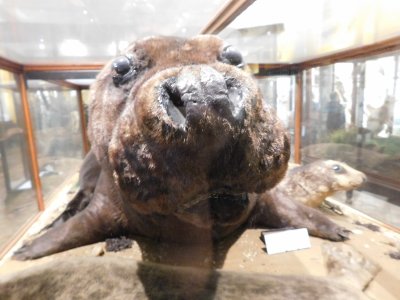
The Dead Zoo |
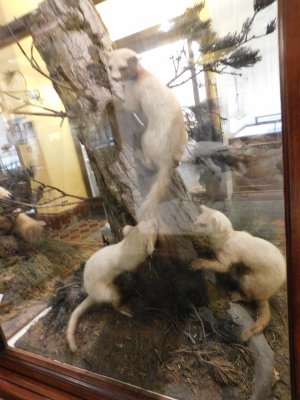
The Dead Zoo |
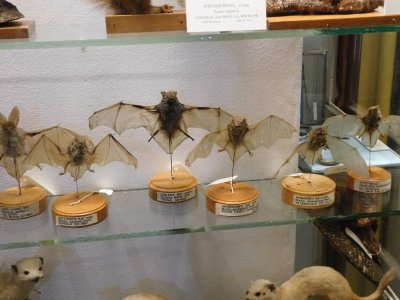
The Dead Zoo |
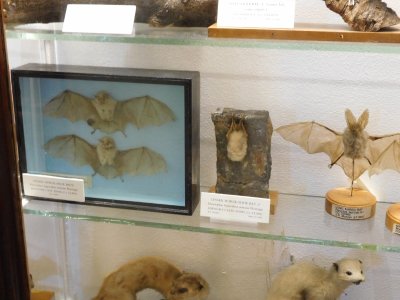
The Dead Zoo |
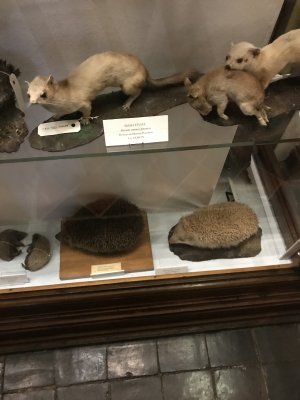
The Dead Zoo |
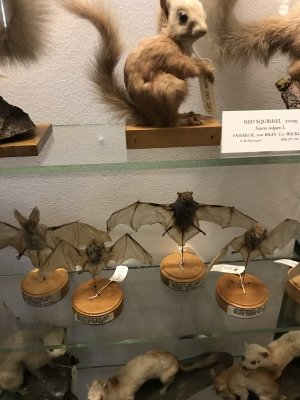
The Dead Zoo- Squirrel! |
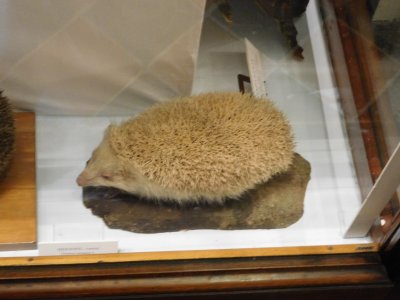
The Dead Zoo |
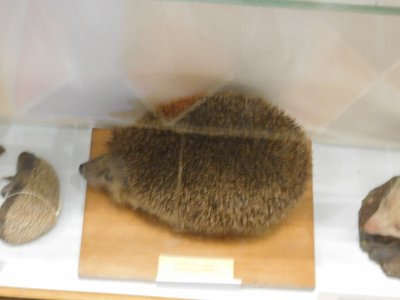
The Dead Zoo |
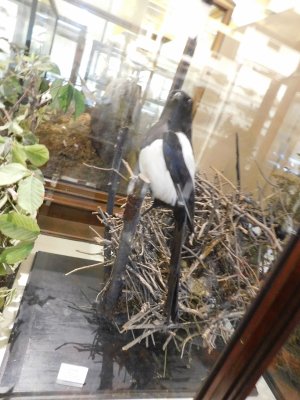
The Dead Zoo |
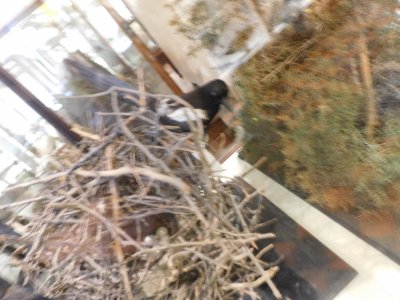
The Dead Zoo |
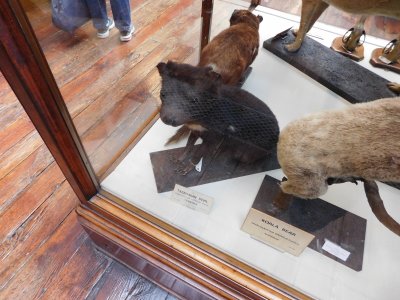
The Dead Zoo- The Tasmanian Devil has not been run over, it's a reflection! |
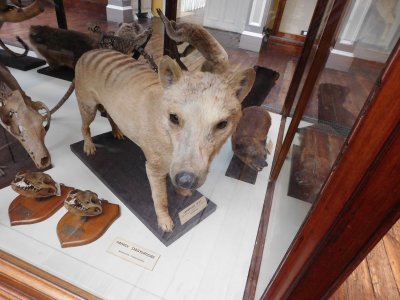
Thylacine(Tasmanian wolf), now extinct, is one of the largest known carnivorous marsupials, evolving about 4 million years ago |
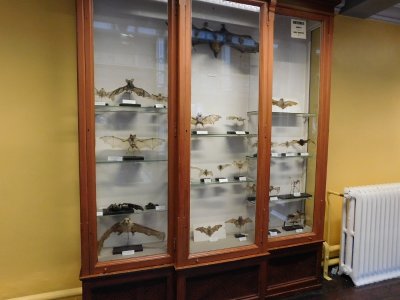
The Dead Zoo |
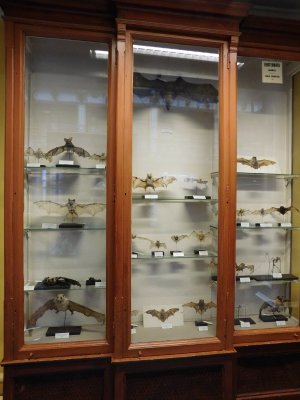
The Dead Zoo- It's getting Batty up in here! |
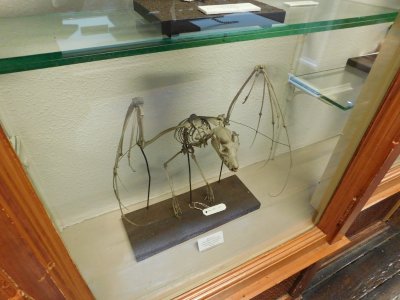
The Dead Zoo |
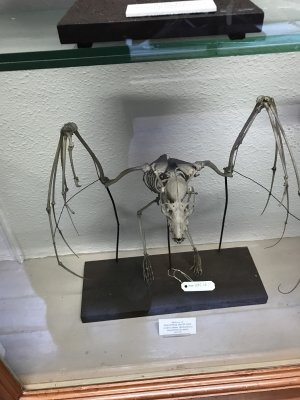
The museum has been used as a filming location, particularly for Victorian period dramas |
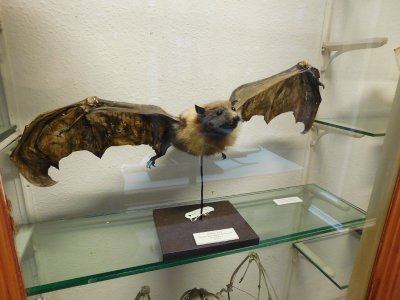
These include an episode of Ripper Street season 2 in 2013 |
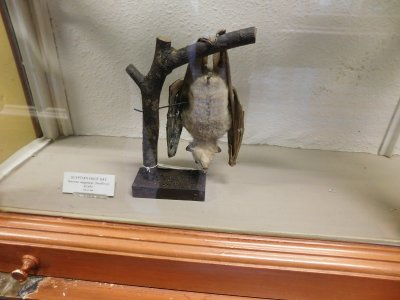
In 2015 Penny Dreadful filmed in the museum for season 3, seeing the museum standing in for the Natural History Museum, London |
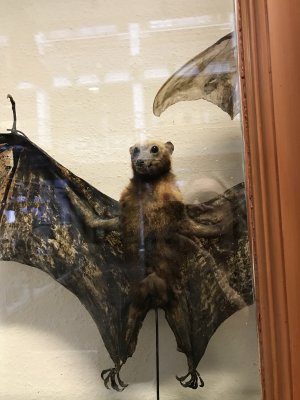
The Dead Zoo |
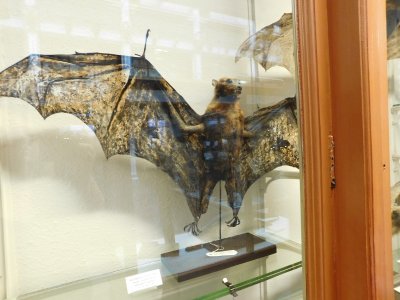
The Dead Zoo |
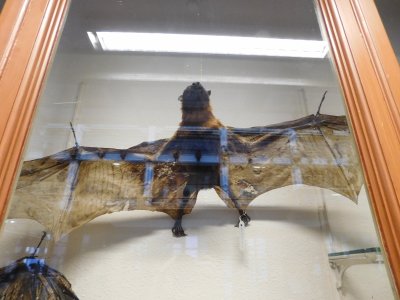
The Dead Zoo |
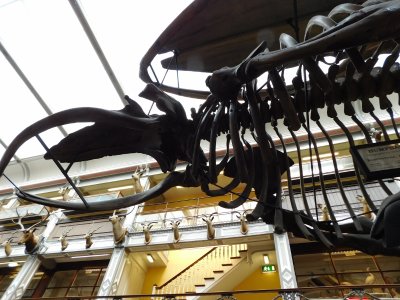
The Dead Zoo- 20 metre long humpback whale skeleton suspended from the roof |
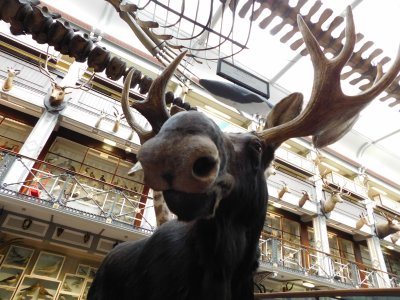
The Dead Zoo- I found Bullwinkle! |
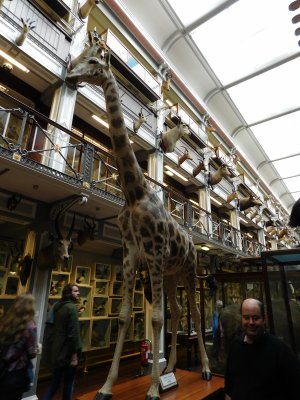
The Dead Zoo- Spoticus the giraffe |
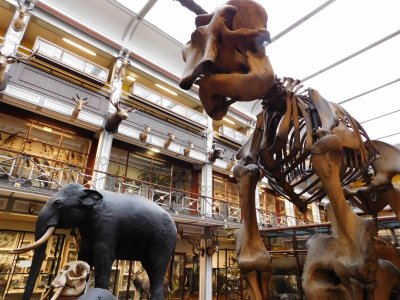
The upper floor has an elephant, polar bear, lions, an array of monkeys, apes & lemurs - the Mammals of the World collection |
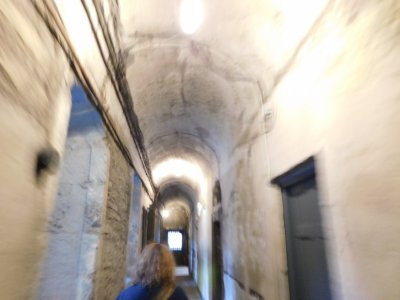
Kilmainham Gaol(1796) was called the "New Gaol" to distinguish it from the old prison it was intended to replace |
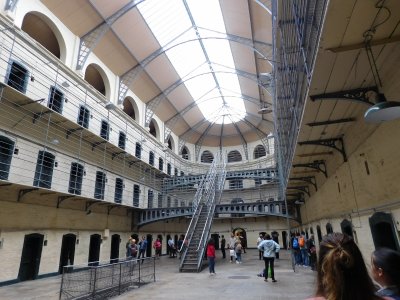
Kilmainham Gaol replaced a noisome dungeon, just a few hundred metres from the present site |
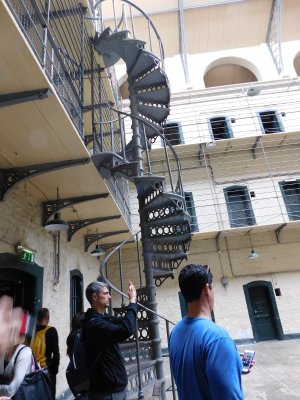
Kilmainham Gaol-Originally, public hangings took place at the front of the prison |
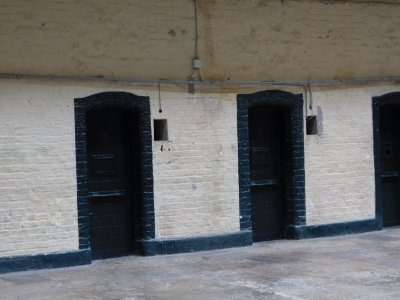
Kilmainham Gaol- However, from the 1820s onward very few hangings, public or private, took place at Kilmainham |
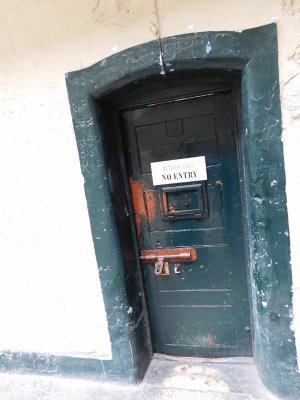
Kilmainham Gaol- A small hanging cell was built in the prison in 1891 |
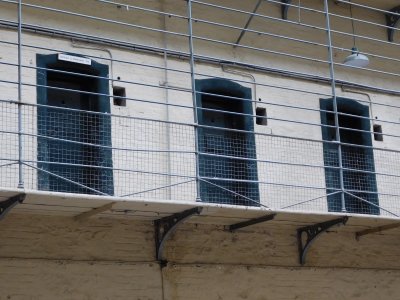
Kilmainham Gaol- There was no segregation of prisoners; men, women and children were incarcerated up to 5 in each cell |
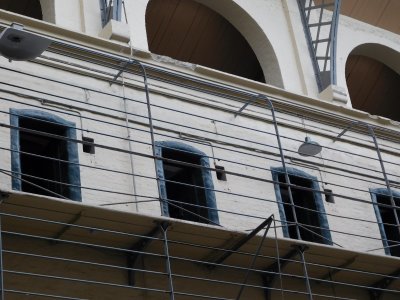
Kilmainham Gaol- With only a single candle for light and heat |
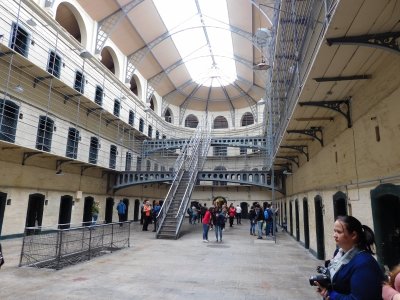
Kilmainham Gaol- Most of their time was spent in the cold and the dark, and each candle had to last for two weeks |
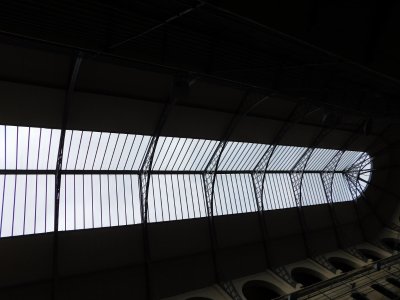
Kilmainham Gaol- Redesigned roof that allows ample sunlight in now after restoration |
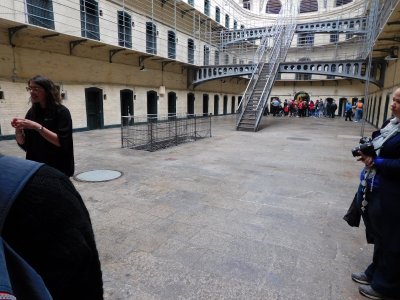
Kilmainham Gaol- At Kilmainham, the poor conditions in which women prisoners were kept provided the spur for the next stage of d |
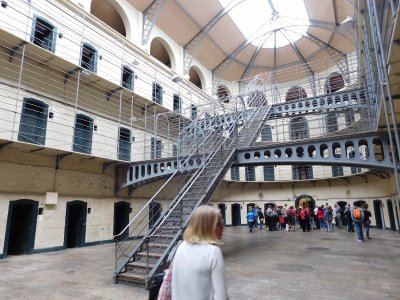
The Inspectors 1809 report had observed that male prisoners were supplied with iron bedsteads |
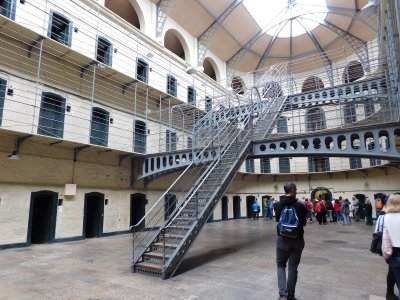
while females lay on straw on the flags in the cells and common halls |
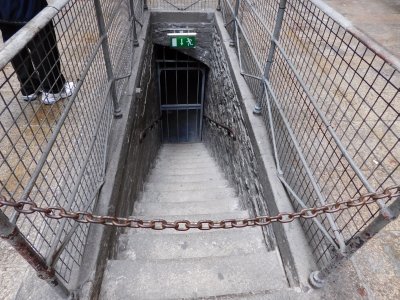
to relieve the overcrowding, 30 female cells were added to the Gaol in 1840 |
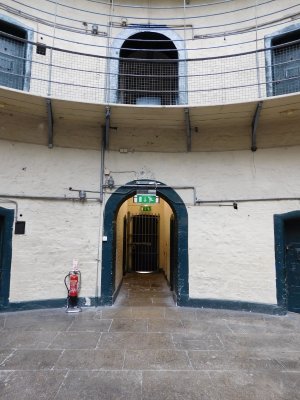
Not long before the Great Famine occurred, and Kilmainham was overwhelmed with the increase of prisoners |
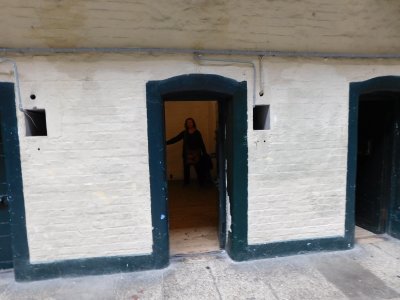
Kilmainham Gaol cells were roughly 28 square metres in area |
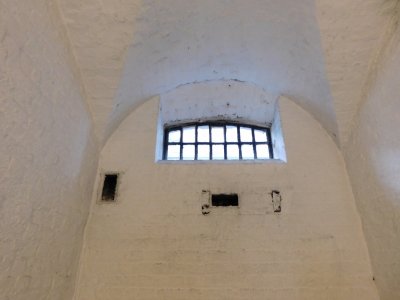
Kilmainham Gaol-The majority of the Irish leaders in the rebellions of 1798, 1803, 1848, 1867 and 1916 were imprisoned there |
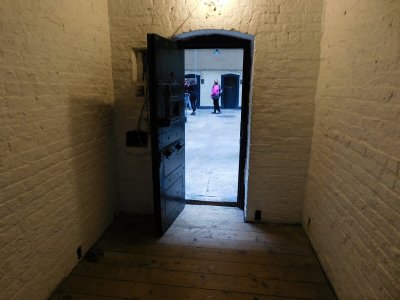
Kilmainham Gaol-Leaders of the 1916 Easter Rising, were imprisoned and executed in the prison by the orders of the UK Government |
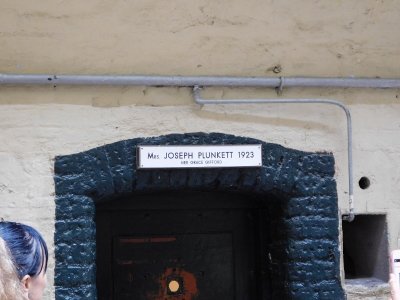
Married her fiancé Joseph Plunkett in Kilmainham Gaol a few hours before he was executed for his part in the 1916 Easter Rising |
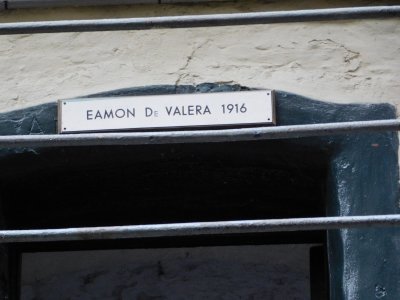
Rising leader arrested, sentenced to death but released for a variety of reasons, who later served as President of Ireland |
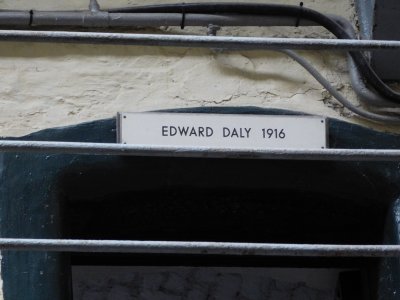
Commandant of Dublin's 1st battalion in the Easter Rising of 1916, youngest man to hold that rank, & the youngest executed after |
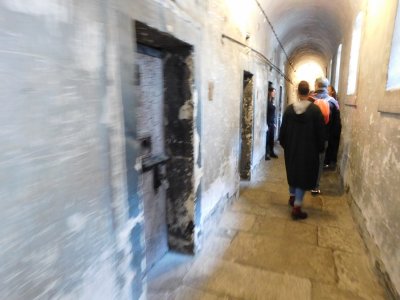
Kilmainham Gaol was decommissioned as a prison by the Irish Free State government in 1924 |
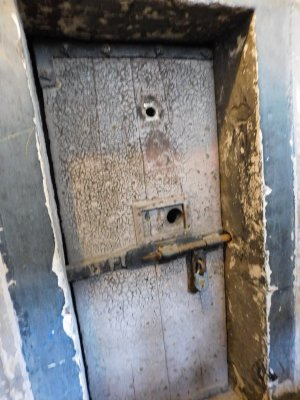
Seen principally as a site of oppression & suffering, there was no declared interest in its preservation as a Monument |
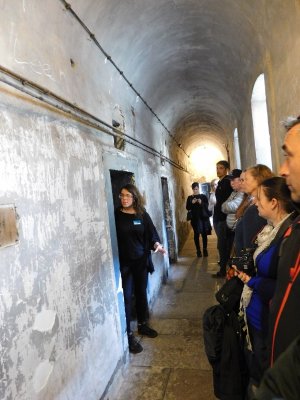
Complicated by the fact that 4 Republican prisoners executed by the Free State government were shot in the prison yard |
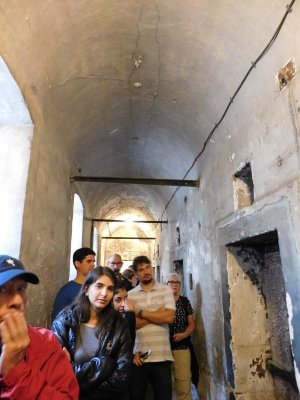
The Irish Prison Board contemplated reopening it as a prison during the 1920s but all such plans were finally abandoned in 1929 |
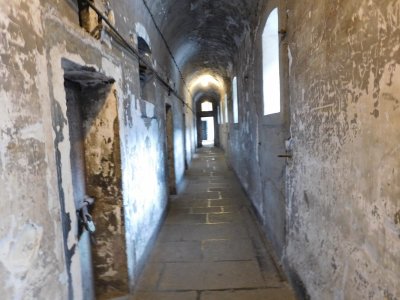
In 1936 the government considered the demolition of the prison but the price of this undertaking was seen as prohibitive |
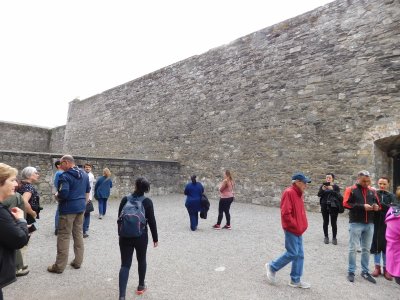
An architectural survey by the Office of Public Works after World War II revealed that the prison was in a ruinous condition |

From the late 1950s, a grassroots movement for the preservation of Kilmainham Gaol began to develop |
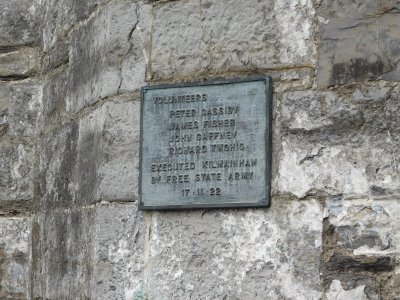
Kilmainham Gaol Restoration Society formed in 1958 & agreed a narrative of the unified national struggle was to be articulated |
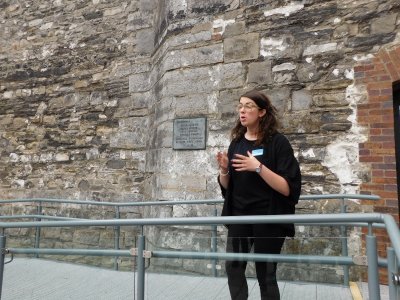
for the preservation of Kilmainham Gaol began to develop |
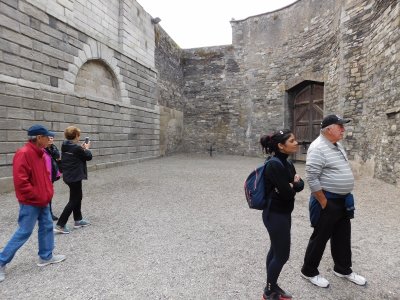
Since its restoration, Kilmainham Gaol has been understood as one of the most important Irish monuments of the modern period |
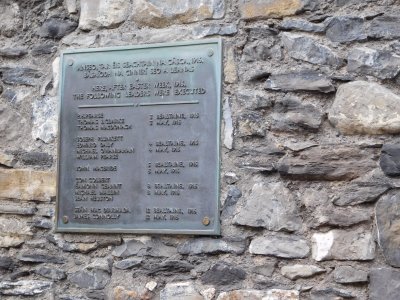
in relation to the narrative of the struggle for Irish independence |
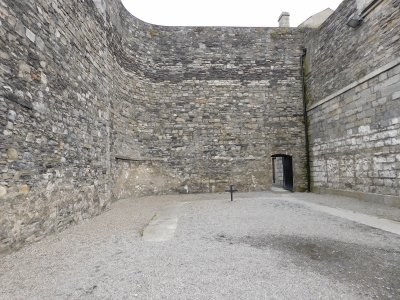
From opening(1796) to decommissioning(1924) Kilmainham Gaol was a site of incarceration of significant Irish nationalist leaders |
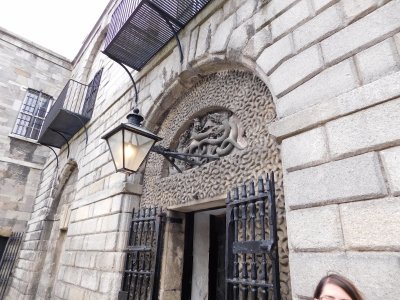
Thus, its history as an institution is intimately linked with the story of Irish nationalism |

Kilmainham Gaol |
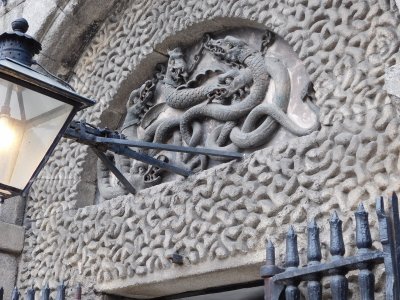
An art gallery on the top floor exhibits paintings, sculptures & jewellery of prisoners incarcerated in prisons all over Ireland |
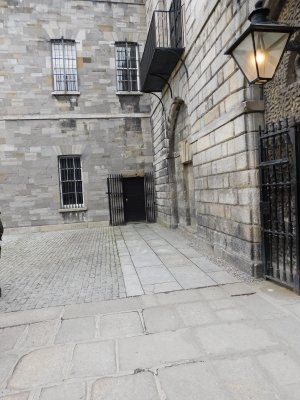
Kilmainham Gaol |
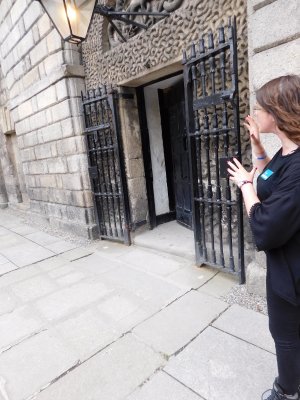
Kilmainham Gaol |
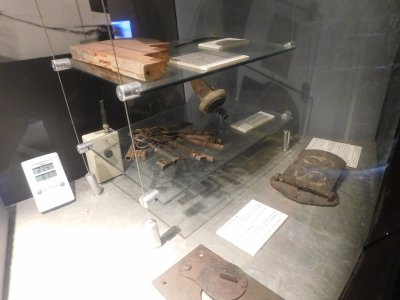
Kilmainham Gaol- Museum on the history of Irish nationalism |
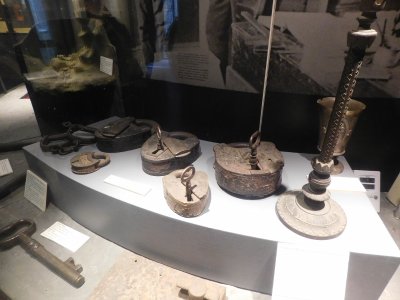
Kilmainham Gaol- Museum on the history of Irish nationalism |
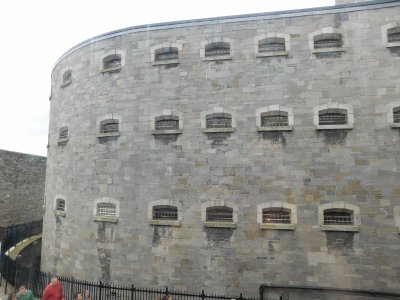
Kilmainham Gaol is one of the biggest unoccupied prisons in Europe |
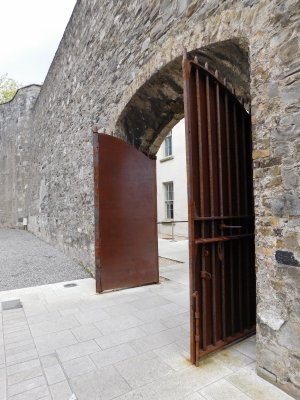
Kilmainham Gaol- Now empty of prisoners, it is filled with history |
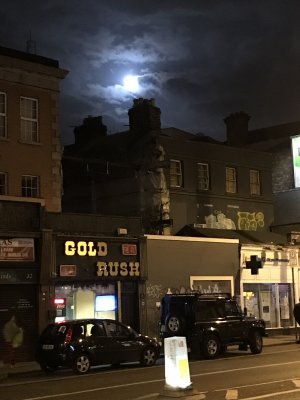
Cool moon walking home after a funtastic day |











